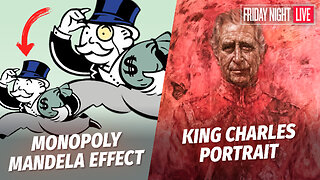IN THE WAKE OF THE BOUNTY (1933) Arthur Greenaway, Mayne Lynton & Errol Flynn | Action, Drama | B&W
In the Wake of the Bounty (1933) is an Australian film directed by Charles Chauvel about the 1789 Mutiny on the Bounty. It is notable as the screen debut of Errol Flynn, playing Fletcher Christian. The film preceded MGM's more famous Mutiny on the Bounty, starring Charles Laughton and Clark Gable, by two years.
SYNPOSIS
A former member of the crew of the HMS Bounty recounts the story of the mutiny aboard ship.
Chauvel's film uses introductory enacted scenes showing the mutiny, followed by documentary footage, anthropological style, of the mutineers' descendants on Pitcairn Island. Chauvel also used footage of Polynesian women dancers; and film of an underwater shipwreck, filmed with a glass bottomed boat, which he believed was the Bounty but was probably not. This was Chauvel's first 'talkie' and he had clearly at this stage not yet learned to direct actors: the dialogue is very stiff and amateurish. The use of long sections of documentary footage with a voice over, combined with acted scenes, is similar to the hybrid silent and talking pictures that were produced during the transition to sound. It also represents the combination of interests of the director, and he returned to documentary toward the end of his career with the BBC television series Walkabout. Despite the poorly written dialogue,[8] the documentary sections retain their excellence. A return to enactments at the end of the film, with one scripted modern scene in which a child suffers because of the lack of regular ship visits which could have taken the child to hospital, probably sought to make the film a useful voice for the Pitcairn Island community, who had been generous with their participation.
The film mixed re-enactments with documentary, and focused not so much on the mutiny itself as on its consequences.
CAST & CREW
Mayne Lynton as Lieut. Bligh
Errol Flynn as Fletcher Christian
Victor Gouriet as Michael Byrne
John Warwick as Midshipman Young
Directed by Charles Chauvel
Written by Charles Chauvel
Produced by Charles Chauvel
Cinematography Tasman Higgins
Edited by William Shepherd
Music by Lionel Hart
Production company Expeditionary Films
Distributed by Universal Pictures, Umbrella Entertainment
Release date 15 March 1933
Running time 66 mins
Country Australia
Language English
Budget £6,500
Box office £7,000 (Australia)
NOTES
There was at least one other film of the Bounty story prior to Chauvel's film, by Australians Raymond Longford and Lottie Lyell, The Mutiny of the Bounty (1916), filmed in New Zealand. This film was to be the first of a series of travel adventures to be made by Chauvel for his new company, Expeditionary Films.
In March 1932, Chauvel left Australia with his wife Elsa and cameraman Tasman Higgins and sailed to Pitcairn Island. They were there for three months shooting footage under sometimes extremely dangerous conditions, having to travel around the coast in whaleboats and climb up cliffs on ropes. They then joined a passing boat and went to Tahiti where they spent two months filming more footage.
Chauvel and his crew returned to Sydney in September. His unedited footage was confiscated by the Customs Department and viewed by the censors. They requested cuts of scenes of bare-breasted Tahitian dancers. Chauvel protested and succeeded in having the footage released to him uncut, subject to a censorship review after the completion of the film.
In October 1932 Chauvel registered a script The Story of Pitcairn Island.
The re-enactment scenes were shot on sets built at the studio of Cinesound Productions in Bondi.
There are different stories how Errol Flynn was cast. According to one, Chauvel saw his picture in an article about a yacht wreck involving Flynn. The most common one is he was discovered by cast member John Warwick. His wage has been variously quoted as £3/10 a week or £10 a week.
Flynn would later claim to be descended from Bounty mutineers.
When the film was submitted to the censors, they objected to several scenes, including those with bare breasts and depictions of floggings. Chauvel protested that the dancing scenes were supervised by a Methodist clergyman. Chauvel announced he would appeal and was successful in getting the film passed after a compromise version was agreed upon. Chauvel had criticised the censors so much that the Minister for Customs was moved to defend them
The movie was released by Universal Pictures, whose Australian managing director, Herc McIntyre, became an important supporter of Chauvel throughout the director's career. It was described as a "middle grade" success at the box office.
#oldmovies #freemovies #drama #action #classicfilms #freemoviesonline #blackandwhite #lostandfoundfilms
-
 19:36
19:36
Lost n Found Films
5 days agoBEAR SHOOTERS (1930) Norman 'Chubby' Chaney, Jackie Cooper & Mary Ann Jackson | Comedy, Family | COLORIZED
32 -
 1:01:06
1:01:06
The StoneZONE with Roger Stone
7 hours agoWill Terrorists Take Down America's Power Grid? With Glenn Rhoades | The StoneZONE w/ Roger Stone
28.9K23 -
 1:03:58
1:03:58
Edge of Wonder
7 hours agoAce Ventura: Mandela Detective, King Charles Portrait & Weird News
31.4K47 -
 1:40:05
1:40:05
The Quartering
11 hours agoWhy Modern Women Suck w/Hoe_Math
56.9K33 -
 1:43:26
1:43:26
Robert Gouveia
7 hours agoGarland SHAKING over CONTEMPT; Congressional MELTDOWN; Fani RAGES at Senate; Tish INVESTIGATED
51.1K68 -
 1:48:05
1:48:05
2 MIKES LIVE
9 hours ago#67 2ML Open Mike Friday, we have a LOT to talk about!
30.8K3 -
 2:27:40
2:27:40
WeAreChange
9 hours agoIt’s NOT Just The Frogs — They’re Turning All The Animals GAY??
69.8K37 -
 1:02:40
1:02:40
In The Litter Box w/ Jewels & Catturd
1 day agoPolice State | In the Litter Box w/ Jewels & Catturd - Ep. 570 - 5/17/2024
82.8K59 -
 1:57:17
1:57:17
Twins Pod
9 hours agoTwins Pod - Episode 13 - Tim Kennedy: Seals Vs Green Berets, Tigers Vs Bears, & Israel Vs Palestine
72.1K37 -
 2:21:43
2:21:43
Tucker Carlson
1 day agoDave Smith: Russia, Israel, Trump & the Swamp, Obama, and the Media Attacks on Joe Rogan
161K408